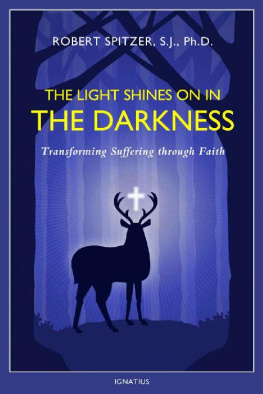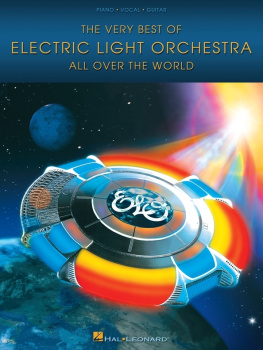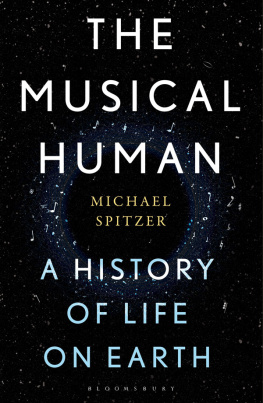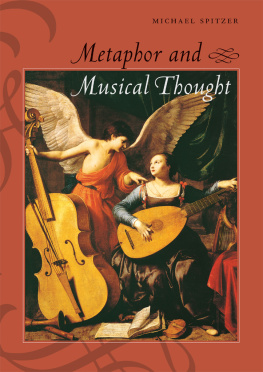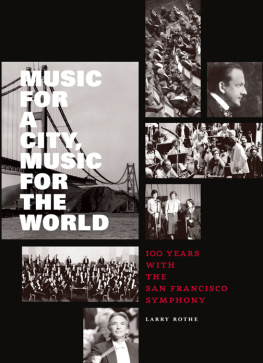John Spitzer - The Birth of the Orchestra
Here you can read online John Spitzer - The Birth of the Orchestra full text of the book (entire story) in english for free. Download pdf and epub, get meaning, cover and reviews about this ebook. year: 2004, publisher: OxfordUP, genre: Children. Description of the work, (preface) as well as reviews are available. Best literature library LitArk.com created for fans of good reading and offers a wide selection of genres:
Romance novel
Science fiction
Adventure
Detective
Science
History
Home and family
Prose
Art
Politics
Computer
Non-fiction
Religion
Business
Children
Humor
Choose a favorite category and find really read worthwhile books. Enjoy immersion in the world of imagination, feel the emotions of the characters or learn something new for yourself, make an fascinating discovery.

- Book:The Birth of the Orchestra
- Author:
- Publisher:OxfordUP
- Genre:
- Year:2004
- Rating:3 / 5
- Favourites:Add to favourites
- Your mark:
- 60
- 1
- 2
- 3
- 4
- 5
The Birth of the Orchestra: summary, description and annotation
We offer to read an annotation, description, summary or preface (depends on what the author of the book "The Birth of the Orchestra" wrote himself). If you haven't found the necessary information about the book — write in the comments, we will try to find it.
The Birth of the Orchestra — read online for free the complete book (whole text) full work
Below is the text of the book, divided by pages. System saving the place of the last page read, allows you to conveniently read the book "The Birth of the Orchestra" online for free, without having to search again every time where you left off. Put a bookmark, and you can go to the page where you finished reading at any time.
Font size:
Interval:
Bookmark:
The Birth of the Orchestra
HISTORY OF AN INSTITUTION, 16501815
John Spitzer
AND
Neal Zaslaw


Great Clarendon Street, Oxford 0x2 6DP
Oxford University Press is a department of the University of Oxford.
It furthers the Universitys objective of excellence in research, scholarship,
and education by publishing worldwide in
Oxford New York
Auckland Bangkok Buenos Aires Cape Town Chennai
Dar es Salaam Delhi Hong Kong Istanbul Karachi Kolkata
Kuala Lumpur Madrid Melbourne Mexico City Mumbai Nairobi
So Paulo Shanghai Taipei Tokyo Toronto
Oxford is a registered trade mark of Oxford University Press
in the UK and in certain other countries
Published in the United States
by Oxford University Press Inc., New York
John Spitzer and Neal Zaslaw 2004
The moral rights of the authors have been asserted
Database right Oxford University Press (maker)
First published 2004
All rights reserved. No part of this publication may be reproduced,
stored in a retrieval system, or transmitted, in any form or by any means,
without the prior permission in writing of Oxford University Press,
or as expressly permitted by law, or under terms agreed with the appropriate
reprographics rights organization. Enquiries concerning reproduction
outside the scope of the above should be sent to the Rights Department,
Oxford University Press, at the address above
You must not circulate this book in any other binding or cover
and you must impose this same condition on any acquirer
British Library Cataloguing in Publication Data
Data available
Library of Congress Cataloging in Publication Data
Data available
ISBN 13: 978-0-19-518955-1
Two heads may be better than one, but they are certainly no faster. We outlined this book together fifteen years ago, and weve been chipping away at it ever since. Neal Zaslaw wrote the first drafts of Chapters 3 and 6; the remaining chapters were drafted by John Spitzer. The two of us edited, rewrote, and reedited the entire book together. Our two heads bear collective responsibility for any insights and all errors that readers may find.
As we finished the book we realized, not entirely to our surprise, that we had written a narrative historynot a chronological account by any means, but a narrative in the sense that we tell a story that has a beginning, a middle, and an end. Once upon a time there were no orchestras. In the second half of the seventeenth century, at the courts of kings, princes, and cardinals, instrumentalists began to organize into ensembles that combined strings, winds, and continuo instruments and that put several players on each of the string parts. Over the course of the eighteenth century these ensembles developed distinctive repertories, distinctive performance practices, distinct personnel, and their own administrative structures, until by the 1790s and early 1800s the orchestra had become recognizable as the institution that, with changes, still exists in concert halls and opera houses in many parts of the world.
Narrative histories seem to have gone somewhat out of fashion these days. Grand narratives, says Lyotard, have lost their credibility by which he seems to mean that people since the middle of the twentieth century have become increasingly skeptical of Christian, Marxist, and/or scientific accounts of history as the story of human progress. Postmodern literary critics and historians have extended Lyotards dictum to encompass all narratives great or small, proclaiming somewhat gleefully that narrative in general is dead.
We reject this notion. To say that historical narratives are impossible is to say that we can no longer tell a story about what happened in the past, or that we must tell as many stories as there are readers. And this means in turn that the past no longer has any meaning for the present, or that it has an infinite number of meanings, which amounts to the same thing.
We propose to tell a single, if multilayered, story of the orchestrawho created orchestras, what the details of this process were, and when, where, and why orchestras came into being. Our story by itself is at most a middle-sized narrative, but it is linked to a grander narrative: the creation of modern institutions. Armies, navies, banks, bureaucracies, factories, corporations, secondary schools, scientific societies, and more all came into being during the seventeenth and eighteenth centuries, in developments that were, if not part of the same process as the birth of the orchestra, at least parallel. If readers choose to make our story a chapter in this grand narrative of modern institutions, we have no objection.
Besides those whose assistance is acknowledged in our footnotes, we give our warm thanks to the following people who helped us at various stages of the project: Katherine Flegal, Ellen Zaslaw, Kyra Voss, Douglas Laing, Kelly Pask, Jennifer Strauss, Michele Cabrini, Kate van Orden, Brooks Kuykendall, Marc Mellits, Bonnie Blackburn, and Jane Dieckmann. We also thank the National Endowment for the Humanities, the American Council of Learned Societies, Peabody Conservatory, and Cornell University for grant and research support.
J.S.
N.Z.
Baltimore, MD
Ithaca, NY
December 2002
Acknowledgment is made to the following for photographs and permission to reproduce illustrations:
Archivio di Stato, Bologna:
Bayerische Staatsgemldesammlungen, Alte Pinakothek, Munich:
Biblioteca Nazionale Vittorio Emanuele III, Naples:
Bibliothque de Lille, Mdiathque Municipale Jean Lvy:
Bibliothque Nationale de France, Paris:
Civica Raccolta delle Stampe Achille Bertarelli, Milan:
Carl A. Kroch Library, Cornell University Library, Ithaca, NY:
Courtauld Institute of Art, London:
The Folger Shakespeare Library, Washington, DC:
The Johns Hopkins University, Garrett Library:
Kungliga biblioteket, Stockholm:
Library of Congress, Washington, DC:
Lord Hastings:
Metropolitan Museum of Art, New York:
Dr. Jrgen Meyer:
Museo di Roma:
Museo Nacional del Prado, Madrid:
Museum of Fine Arts, Boston:
National Archives of Hungary:
Nationalmuseum, Stockholm:
The New York Public Library:
Runion des Muses Nationaux/Art Resource, New York:
Rijksmuseum, Amsterdam:
Schsische Landesbibliothek, Dresden:
Staatliche Kunstsammlungen, Dresden:
Staatsarchiv, Hamburg:
Stadtarchiv Leipzig:
(Plates appear between pp. 300 and 301.)
All music examples are notated at sounding pitch.
LIBRARY SIGLA

OTHER ABBREVIATIONS
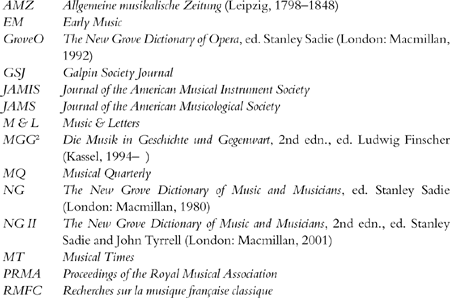
Introduction
The story of Orpheus has provided the subject for operas, ballets, tone poems, and other musical works, beginning with Polizianos
Next pageFont size:
Interval:
Bookmark:
Similar books «The Birth of the Orchestra»
Look at similar books to The Birth of the Orchestra. We have selected literature similar in name and meaning in the hope of providing readers with more options to find new, interesting, not yet read works.
Discussion, reviews of the book The Birth of the Orchestra and just readers' own opinions. Leave your comments, write what you think about the work, its meaning or the main characters. Specify what exactly you liked and what you didn't like, and why you think so.

